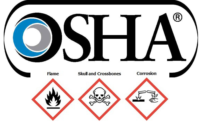Back in 2012, OSHA aligned its Hazard Communication Standard (HazCom or HCS) with Revision 3 of the United Nation’s Globally Harmonized System of Classification and Labeling (GHS), which resulted in the current HazCom 2012 Standard.
Since then, the UN has continued to publish updated versions of the GHS every two years. Its most recent edition — GHS Revision 7 — is of particular significance as OSHA has expressed its intention to update HazCom 2012 to align with this latest version of the system.
The UN allows nations and agencies the flexibility to pick and choose which elements of the GHS to adopt. This is a primary tenet of the GHS that aims to facilitate greater global adoption of the system, and is an approach OSHA took with its first adoption of GHS in 2012. We can expect that OSHA’s alignment with Revision 7 of the UN’s GHS will happen in a way that continues to address OSHA’s specific needs and interests, and works within the scope of its regulatory oversight for hazardous chemicals in the U.S.
While specific changes to HazCom 2012 will not be known until OSHA releases its notice of proposed rulemaking (NPRM), currently planned for February, 2019, a number of noteworthy modifications appear in Revision 7 compared to its preceding edition — Revision 6 — that you should be aware of. OSHA may choose to adopt some or all of these changes when it aligns the HazCom Standard with the newest version of the GHS. Below is a list of what’s new.
What’s New?
- Updated definitions for some health hazard classes. The definitions of skin corrosion, skin irritation, serious eye damage, eye irritation, dermal corrosion, dermal irritation, respiratory sensitizer, specific target organ toxicity, reproductive toxicity, and carcinogenicity are all slightly updated for additional clarity.
- Modified criteria for how flammable gases are categorized. Prior to Revision 7, there was ambiguity regarding how to apply categories provided in the flammable gas chapter. Now, to eradicate some of the confusion, both pyrophoric gases and chemically unstable gases meet the classification criteria of flammable gases category 1A. Also, two hazard statements are now assigned to pyrophoric gases and chemically unstable gases category 1A/1B.
- Revised and further rationalized precautionary statements in Annex 3. A new precautionary statement P503 now exists for some explosives, instructing users to refer to the chemical manufacturer/supplier for information on its disposal, recovery, or recycling. Also, Section 3.2 now reads, “Flexibility in the use of precautionary statements with the first heading under that being Omission of precautionary statements where the advices is not relevant.”
Other GHS changes
As part of the GHS evolution, the three UN editions of GHS published between GHS Revision 3, the version HazCom is currently aligned to, and the latest version of GHS Revision 7, which OSHA is aiming to align to next, each had their own notable modifications.
Below is a sampling of updates from Revisions 4 through 6, which help provide perspective on the types of changes the UN makes on its two-year update intervals, as well as insight into the cumulative updates incorporated into the latest edition — GHS Revision 7. You should be familiar with these changes, since they are parts of the evolving standard that OSHA may consider incorporating when they revise the HazCom Standard next.
- New hazard categories for chemically unstable gases and non-flammable aerosols (Rev. 4)
- Further clarification of criteria to avoid differences in the interpretation of precautionary statements (Rev. 4)
- Addition of a new test method for oxidizing solids (Rev. 5)
- Clarification of hazard classification criteria for skin corrosion/irritation, severe eye damage/irritation, and aerosols (Rev. 5)
- Revised/simplified classification & labelling summary tables (Rev. 5)
- New codification system for hazard pictograms (Rev. 5)
- New hazard class for desensitized explosives (Rev. 6)
- New hazard category for pyrophoric gases (Rev. 6)
- Additional information to be included in Section 9 of safety data sheets (SDSs) (Rev. 6)
How to prepare
So what does all this mean for businesses that must comply with HazCom? While it’s important that you’re aware of OSHA’s Revision 7 alignment plans, all regulated businesses must continue to adhere to the current HazCom 2012, GHS Revision 3 aligned requirements. HazCom 2012 remains the law of the land until OSHA communicates differently.
Instead, you should simply take note of what could change based on the evolution of GHS and use this time to refocus your understanding of current obligations under the GHS-aligned HazCom 2012 Standard.
Chemical manufacturers, importers, distributors and employers of facilities where hazardous materials are used and stored should review their SDS libraries now to ensure they have the most updated information available for employees to access, verify shipped labels and workplace container labels comply with GHS, update written HazCom plans, and make sure all employees have been trained to comprehend the current GHS changes.
Employers, in particular, should be prepared to manage against another phased-in deadline and the consequential SDS library churn resulting from updated documents arriving with any initial shipments from suppliers or with first shipments following significant changes made to the documents.
A well-organized, up-to-date chemical inventory will also help ease the transition to GHS Revision 7 and provide you with valuable insight as to what chemicals you currently have so you can understand how any hazard reclassifications will affect your business.
By taking a few measured steps, safety professionals can begin to lay the groundwork for any future changes to come while improving their hazard communication management right now.



